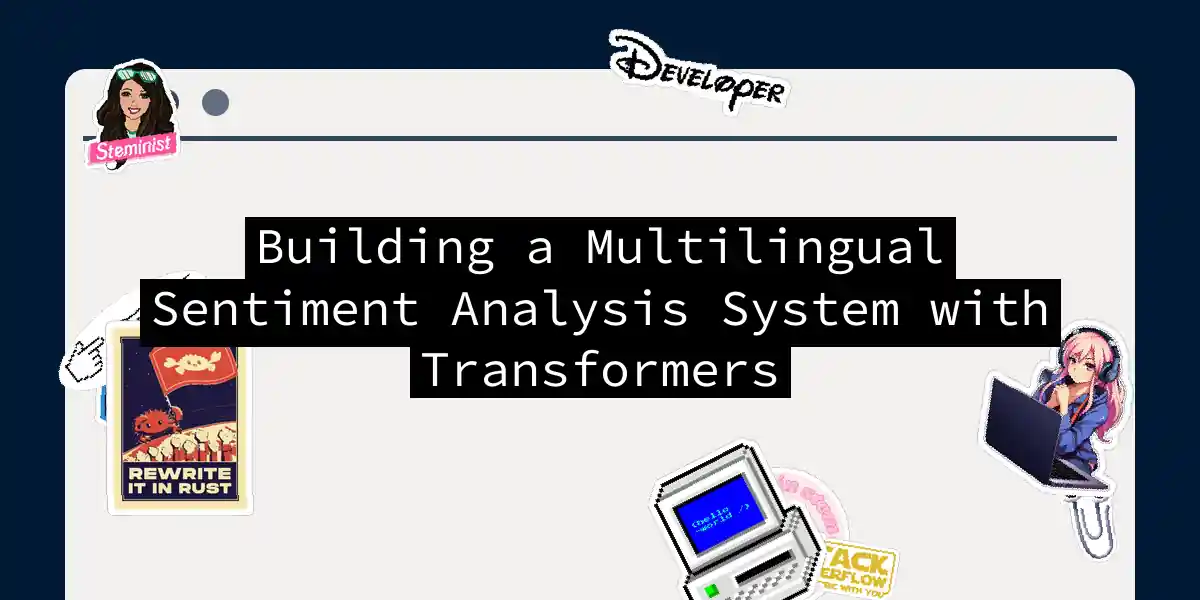Introduction to Multilingual Sentiment Analysis
In the vast and diverse world of text data, sentiment analysis has become a crucial tool for understanding the emotional tone behind the words. With the increasing globalization of communication, the need for multilingual sentiment analysis has never been more pressing. This article will guide you through the process of building a robust multilingual sentiment analysis system using transformers, a class of neural networks that have revolutionized the field of natural language processing (NLP).
Choosing the Right Models
When it comes to multilingual sentiment analysis, selecting the appropriate pre-trained language models is paramount. Here are some of the models you might consider:
- Multilingual BERT: This model is trained on a large corpus of text in multiple languages, making it a strong baseline for multilingual tasks[1][3].
- XLM-RoBERTa: Known for its robust performance across languages, XLM-RoBERTa is particularly useful for tasks that require understanding nuances in different languages[1].
- AraBERT: Specifically designed for Arabic, this model is essential if you need to analyze text in Arabic[1].
- RoBERTa: While primarily trained on English data, RoBERTa can be fine-tuned for other languages and is known for its high performance in monolingual settings[1].
Fine-Tuning the Models
Fine-tuning these pre-trained models on your specific dataset is crucial for achieving high accuracy in sentiment analysis.
Step-by-Step Fine-Tuning Process
Data Preparation:
- Collect and preprocess your dataset, ensuring it is split into training and testing sets.
- Tokenize the text using the appropriate tokenizer for each model.
Model Initialization:
from transformers import AutoTokenizer, AutoModelForSequenceClassification # Example with RoBERTa tokenizer = AutoTokenizer.from_pretrained('roberta-base') model = AutoModelForSequenceClassification.from_pretrained('roberta-base', num_labels=2)Training:
from transformers import Trainer, TrainingArguments training_args = TrainingArguments( output_dir='./results', num_train_epochs=3, per_device_train_batch_size=16, per_device_eval_batch_size=64, evaluation_strategy='epoch', learning_rate=5e-5, save_steps=500, load_best_model_at_end=True, metric_for_best_model='accuracy', greater_is_better=True, save_total_limit=2, save_on_each_node=True ) trainer = Trainer( model=model, args=training_args, train_dataset=train_dataset, eval_dataset=test_dataset, compute_metrics=lambda pred: {'accuracy': torch.sum(pred.label_ids == pred.predictions.argmax(-1)) / len(pred.label_ids)} ) trainer.train()
Ensemble Approach
To leverage the strengths of multiple models, an ensemble approach can be highly effective.
Ensemble Model Architecture
Implementing the Ensemble Model
Extract Pooler Outputs:
from transformers import AutoModel # Example with RoBERTa and Multilingual BERT roberta_model = AutoModel.from_pretrained('roberta-base') mbert_model = AutoModel.from_pretrained('bert-base-multilingual-uncased') def get_pooler_output(model, input_ids, attention_mask): outputs = model(input_ids, attention_mask=attention_mask) return outputs.pooler_output roberta_pooler_output = get_pooler_output(roberta_model, input_ids, attention_mask) mbert_pooler_output = get_pooler_output(mbert_model, input_ids, attention_mask)Concatenate and Pass Through Fusion Layer:
import torch import torch.nn as nn class FusionModel(nn.Module): def __init__(self): super(FusionModel, self).__init__() self.fusion_layer = nn.Linear(2 * 768, 768) # Assuming 768-dimensional pooler outputs self.feed_forward = nn.Linear(768, 2) # For binary sentiment classification self.softmax = nn.Softmax(dim=1) def forward(self, x): x = torch.cat((x[0], x[1]), dim=1) x = self.fusion_layer(x) x = self.feed_forward(x) x = self.softmax(x) return x fusion_model = FusionModel() output = fusion_model((roberta_pooler_output, mbert_pooler_output))
Evaluating the Models
Evaluating the performance of your models is crucial to ensure they meet your requirements.
Metrics for Evaluation
- Accuracy: The proportion of correctly classified instances.
- Precision: The proportion of true positives among all positive predictions.
- Recall: The proportion of true positives among all actual positive instances.
- F1-Score: The harmonic mean of precision and recall.
Example Evaluation Code
from sklearn.metrics import accuracy_score, precision_score, recall_score, f1_score
# Assuming 'predictions' and 'labels' are lists of predicted and actual labels
accuracy = accuracy_score(labels, predictions)
precision = precision_score(labels, predictions)
recall = recall_score(labels, predictions)
f1 = f1_score(labels, predictions)
print(f"Accuracy: {accuracy:.4f}, Precision: {precision:.4f}, Recall: {recall:.4f}, F1-Score: {f1:.4f}")
Real-World Applications and Challenges
Product Reviews
One common application of multilingual sentiment analysis is in analyzing product reviews. For instance, the bert-base-multilingual-uncased-sentiment model is fine-tuned for sentiment analysis on product reviews in six languages and achieves high accuracy across these languages[3].
Social Media
Analyzing sentiments on social media platforms can provide valuable insights into public opinion. However, this task is challenging due to the informal nature of social media text, which often includes slang, emojis, and typos.
Cross-Lingual Challenges
One of the significant challenges in multilingual sentiment analysis is dealing with the nuances of different languages. For example, idioms, sarcasm, and cultural references can be difficult to translate and analyze accurately.
Conclusion
Building a multilingual sentiment analysis system using transformers is a complex but rewarding task. By leveraging pre-trained models, fine-tuning them on your dataset, and employing ensemble techniques, you can create a robust system that accurately analyzes sentiments across multiple languages. Remember, the key to success lies in careful model selection, thorough fine-tuning, and meticulous evaluation.
As you embark on this journey, keep in mind that NLP is an ever-evolving field, and there is always room for improvement. Whether you’re analyzing product reviews or social media posts, the insights you gain can be invaluable. So, dive in, experiment, and let the transformers do the magic
